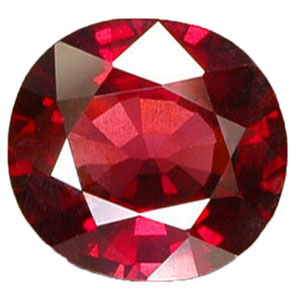Ruby ( Manik )
Starting at Rs. ₹300.00 Per Rati
300/- Per rati
Starting Price
Description
A ruby stone is a pink to blood-red colored gemstone, a variety of the mineral corundum (
Ruby Stone (Manik Stone) has the power to bestow vital energy and positivity to the wearer. It also helps in retention of health and well-being. Ruby gemstone have been used to restore energy fields, promote Love, gain Peace and Safety.
Ruby is said to give name, fame, vigor, virtue, warmth and the capacity to command to its user. It can also raise the individual far above the status in which he was born. Historically, it has been symbolic of love and passion. This is normally red in colour. Ruby is a hot stone.
On diseases front: Ruby helps cure peptic ulcer, fever, rheumatism, gout etc. However prolonged use may cause boils, itch and insomnia as well. Do consult an astrologer or a gemologist before wearing this or any other stone. Ladies should avoid the use of Ruby as it can destroy the body luster.
Ruby stone should be used in gold in third or ring finger of right hand on Sunday.
The name Ruby comes from Latin ‘Rubrum’, which means ‘Red’. Ruby, which is corundum, is simply crystallized alumina (Al2O3) and in pure form it is devoid of color. The rich color in Ruby is mainly due to small amounts of chronic oxide, which is able to replace part of alumina without disturbing the trigonal crystal structure. It has a specific gravity of 3.99. The Mean Refractive Index is 1.765 and the hardness is 9 on the Moh’s scale.
Ruby stone is found in Burma, Thailand, Sri Lanka, East Africa, Kenya, Nepal, Afghanistan, India and Pakistan. The best Rubies are from the Magok district of Burma. Thai Rubies are comparatively less attractive and the Rubies found in Sri Lanka are pink.
Natural Ruby stone never ‘clean’ i.e., without inclusions. They contain inclusions which look like ‘silk’. Natural Ruby encloses small crystals of other minerals, in the form of pale angular grains, cavities of irregular shapes, patches of fine needle-like crisscrossing canals which give a silky effect by reflecting light. If these inclusions are not visible to the naked eye, then the eyeglass should be used to detect them.
If even under high magnification no such inclusions are visible, then the Gem you are checking is most probably a piece of glass. A synthetic Ruby will either not contain any inclusions or else it will have a bubble-like inclusions, or cracks, as seen in a glass, will be visible. The cracks will give a milky hue and will be of an even nature.


Reviews
There are no reviews yet.